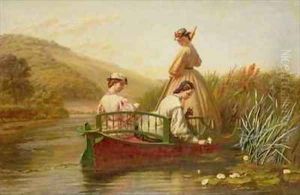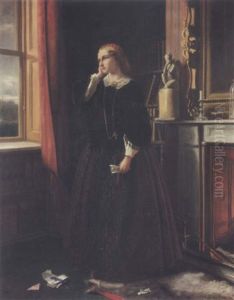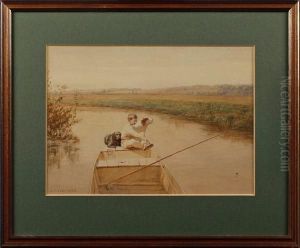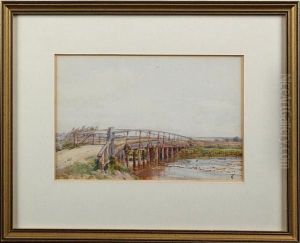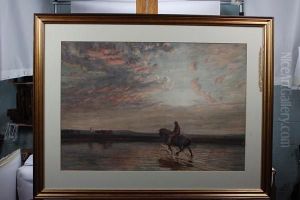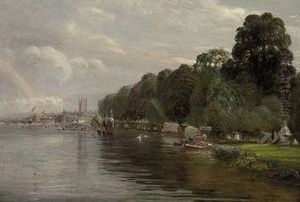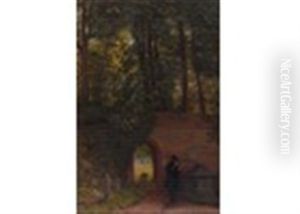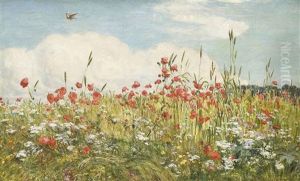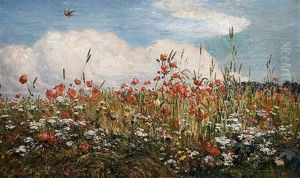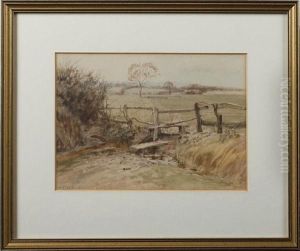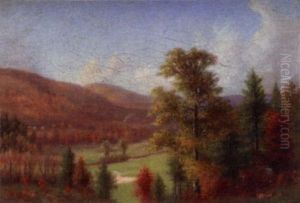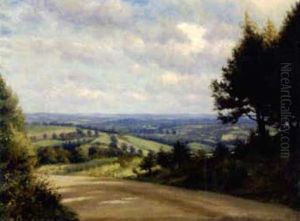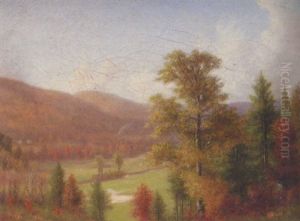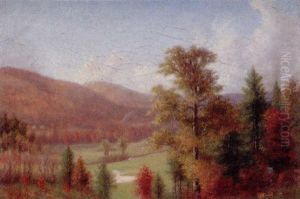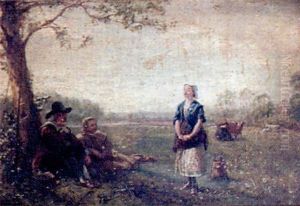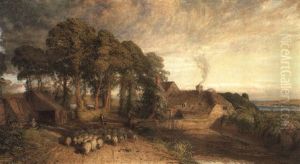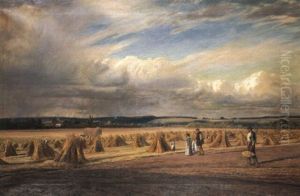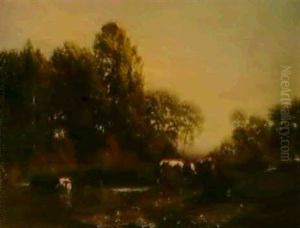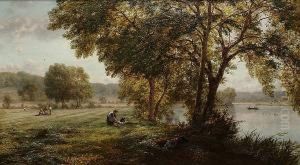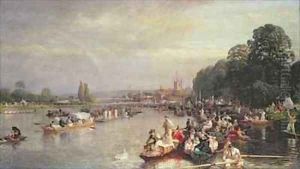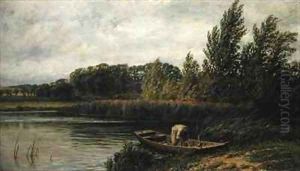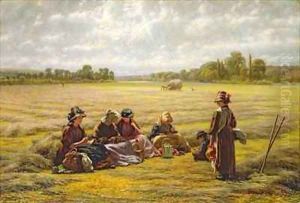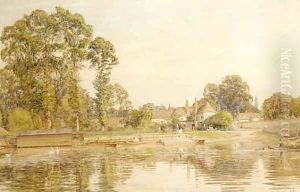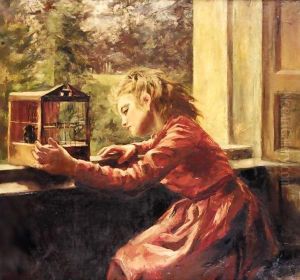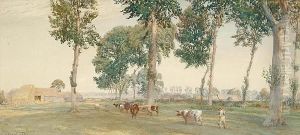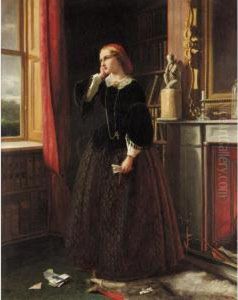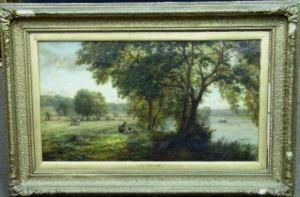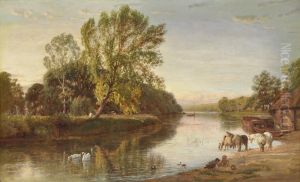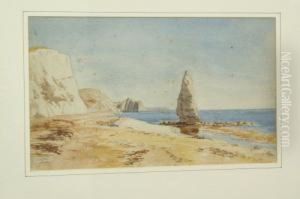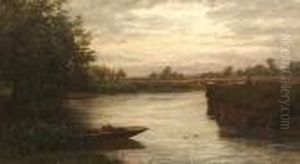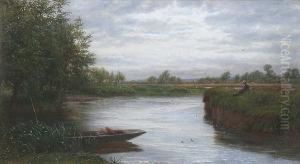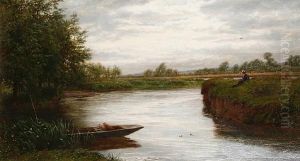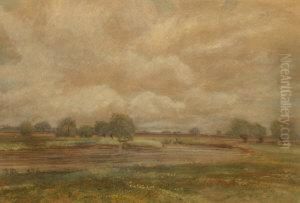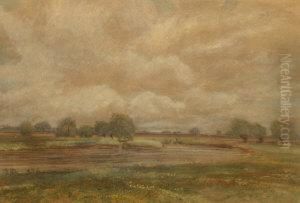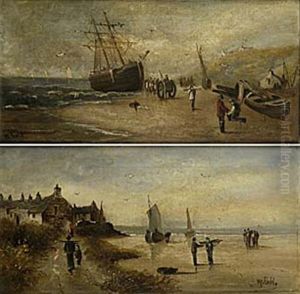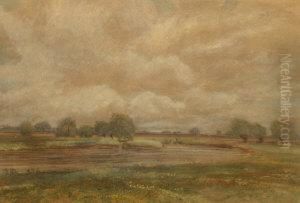Walter Field Paintings
Walter Field was an English landscape painter born in London on January 1, 1837. He was a Victorian artist whose work was influenced by the great British landscape tradition, particularly the art of John Constable and J.M.W. Turner. Field's paintings often focused on the tranquil and pastoral scenes of the English countryside, capturing its changing seasons and moods with a delicate sensitivity to light and color.
Field was educated at the Merchant Taylors' School and initially embarked on a career in business. However, his passion for art led him to pursue painting seriously. He studied art at the Royal Academy schools and also under the guidance of John Rogers Herbert, a historical painter. By the 1860s, Field had established himself as a skilled landscape artist, exhibiting his works at the Royal Academy, the British Institution, and the Society of British Artists, among other venues.
Throughout his career, Field traveled extensively in Europe, drawing inspiration from the landscapes he encountered. His travels took him to France, Switzerland, and Italy, where he studied the works of the Old Masters and contemporary European artists. These experiences influenced his own approach to painting, as he adopted a more fluid and atmospheric style.
Field was not only a painter but also an art educator. He was dedicated to sharing his knowledge and skills, and he authored a book titled 'The Theory and Practice of Enamel Painting on Pottery, Porcelain, and Glass', which was published in 1897. This work reflects his interest in the technical aspects of art-making and his desire to engage with the broader artistic community.
Walter Field's artistic legacy is one of quiet contemplation and a deep appreciation for the natural landscape. His paintings captured the essence of rural England and the beauty of the European scenery he loved so much. He passed away on December 24, 1901, leaving behind a body of work that continues to be admired for its serene beauty and technical proficiency.
